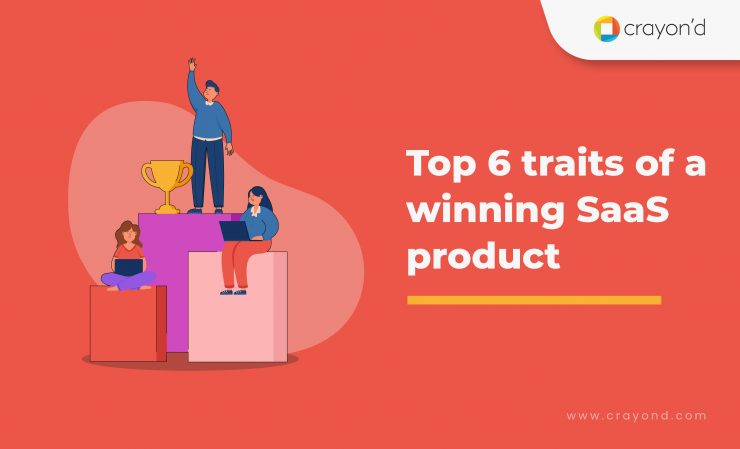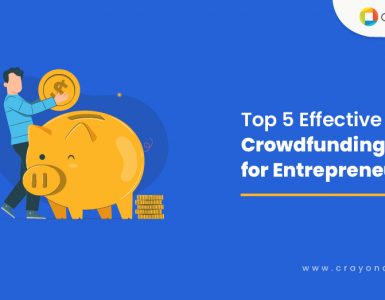The SaaS market has tripled its size in the last five years. And the global SaaS industry revenue is about to reach $171 billion in 2022.
Day in and day out, new SaaS products are ideated, built, and taken to market. Only a few succeed and have a happy time reaching the market and users’ hands. Among the rest, a bunch thrives, and the rest fails.
Scrutinizing failures and finding reasons behind them can make you aware. It can keep you from failure. But, not failing doesn’t mean success. There’s a lot of difference between the two.
To pursue success, it’s good to know —
What sets the winning group apart from others? And, how do they do it?
Let’s peek into traits of winning SaaS products from which you can derive inspiration. The answers are where you need to work things out for your product.
Without much ado, here it goes,
Traits of a winning SaaS product
1. Right value proposition
You will have competitors in the SaaS target market unless you venture into new markets. It’s inevitable, and you’ll have no control over this.
Instead of worrying about the existence of competitors, successful SaaS products focus on differentiating themselves. To be more specific, they work on framing the right value proposition.
On the other hand, only you and your team will know the value and effectiveness of your product. And that’s because you have worked on it. Users have no obligation to put in the time and effort to know your product’s worth.
You have to make it easy for them to grasp your product value. The value proposition is your trump card here. It lets your users and market know what your offering is, who can get benefitted and how different you are from the rest.
A good value proposition gives an apt impression of your SaaS product in the user’s mind. It’s one of the driving factors for signups and purchases.
Acing your value proposition is how you can proceed towards victory.
2. Ease of Integration
In SaaS, blending in is how you can stand out in the crowd and ensure success. All winning SaaS products do the same.

Confusing, isn’t it?
Well, SaaS products are seldom used alone. They are a part of the software ecosystem, filling and bridging the gaps. Companies use a number of SaaS products to carry on their day-to-day work. Here’s a stat for you,
“The average number of SaaS applications used per organization is 80.”
If your product doesn’t go along well with the rest of the user ecosystem, your product will be kept aside. So, it’s crucial to enable integrations with other tools, making it user-friendly.
Easy data access and data exchange (obviously, in secure ways) are a few reasons for SaaS popularity and preference. This data exchange between different data sources maintained by the users is enabled only through effective integration options.
Also, integration options are crucial because it aids in activating users and taking them closer to adopting your SaaS product fully.
This seamless integration option is something that creates a competitive advantage as well.
3. Competitive pricing
One crucial trait of a successful SaaS product— it’s aptly priced. Pricing is the gateway to the product. Pricing is a prime element in the purchase decisions of the user. If improperly set, it might create an aversion and drive the users away.
It is why pricing needs to be very strategic to propel your product into the success lane.
However, pricing isn’t an independent factor. You can’t just determine it with your product value alone. It’s hugely influenced by the market landscape and competitors.
If your product creates a new category of solutions, you might have freedom with the pricing options. However, you have to do it without ignoring your user base.
But, say, the market has products similar to yours. Then you will have to look into the pricing of your competitors.
Pricing is something that you can get right through the trial and error process. It’s a little complicated to decide the fitting model in one go. SaaS product companies usually do a lot of experimentation around the pricing.
Pricing creates an opinion on your product. Doing it right is how you can establish facts in place of biased opinions.
4. Prioritizes Customer success
“In the subscription economy, the connection between your customer’s success and your success is much more direct.” – Ken Lownie.
First-time success can be influenced by several factors. However, to ensure that it continues, SaaS products should focus on customer success primarily.
But, why?
Because in SaaS products, the doors are always open for the users to leave. It’s upon the customer success team to make users realize the product value and help them with queries, issues, and grievances.
The acquisition will not help if the users keep leaving after a brief period of stay.

Prioritizing customer success practices is how you can retain them. These efforts reflect on user retention rates, advocacy, and resulting overall revenue.
While first impressions can aid you in gaining users, it is the continued endeavors of customer success that can prove in the long term.
And just like other leading SaaS products, emphasizing customer success is one of the keys to victory, not just for the immediate period.
5. Ease of use
SaaS products, or in general any digital products are built to make human life easier. Users subscribe to/buy the product with this motive.
Complex to understand and hard-to-use SaaS products will be a major turn-off for them. If they have to figure out how the product works every time, how will that add to their work efficiency?
Subscription-based models let the users judge the product within a short period.
The degree of ease of use is one of the factors that gets judged during the period. If it ain’t satisfactory, they will start looking for other products. High complexity can make them leave even before the free-trial period ends.
Successful SaaS products make the ease of use a baseline quality.
6. Provides configuration and customizations
Every enterprise SaaS user has its own workflows and processes. User requirements might converge. But their use cases, working patterns, methodologies — everything has variations.
Organizations have different standards defined for themselves that suit the best for their daily operations. One size doesn’t fit all.
So, SaaS products need to satiate both common and unique needs. Customization and configuration options can pull these together. It lets the users have what they require in the way they require it.
Successful SaaS products don’t miss giving this choice of comfort to their customers. This flexibility helps the business owners run the company hassle-free. The options bring in a personalized touch, adding to the positive user experience.
Leaving certain parts to the users’ decisions can make a huge difference. Customization and configurations establish a sense of control in the user’s mind. Giving them a feeling of empowerment might make your users go aha.
Endnote
What’s more important than succeeding? Sustaining it.
It’s quite complex because you have to break your own records, exceed the expectations, and only go upwards.
One common thing that helps in achieving success and sustaining it: being agile. It involves every process related to your SaaS product, especially with the user and market insights.
Observe your users and market dynamics. Collect necessary data and look at the areas you are lacking. Take in user feedback and suggestions. Be quick to act on them. Constant improvements are how you can put your SaaS product on the path to success.







Add comment